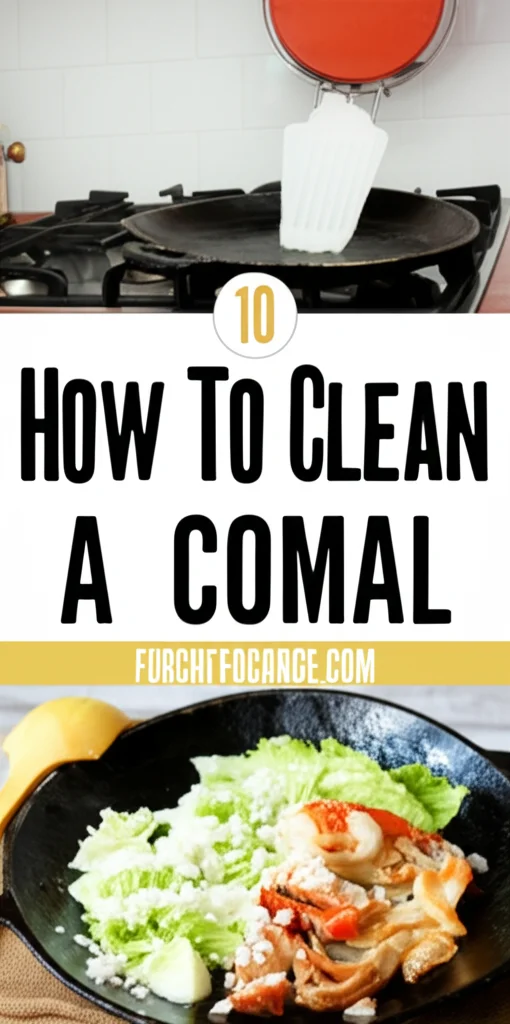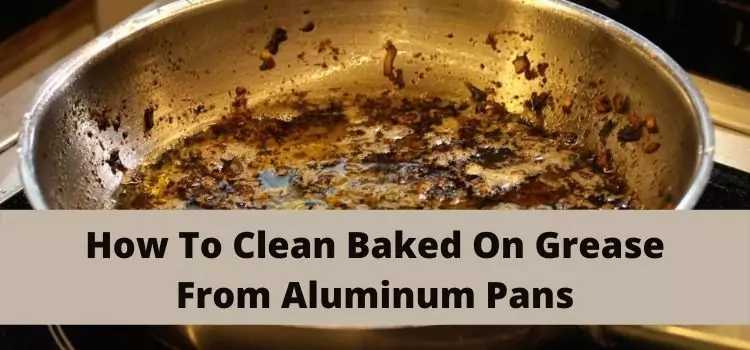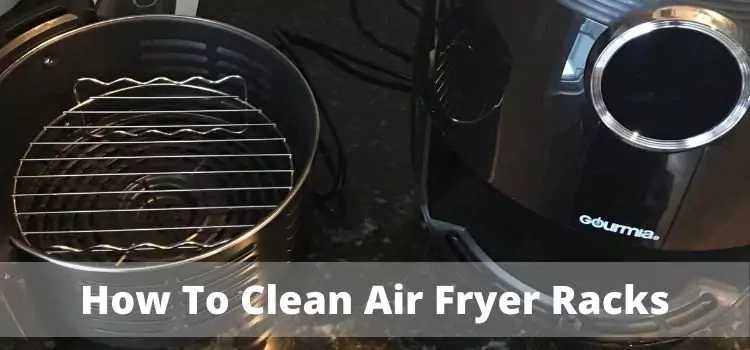· Kitchen Cleaning · 10 min read
How To Clean A Comal

How to Clean a Comal: The Complete Care Guide for Traditional Cookware
A comal is more than just a cooking surface; it’s a culinary tradition passed down through generations in Mexican and Latin American kitchens. This flat, circular griddle is essential for creating perfectly charred tortillas, toasting spices, and preparing countless traditional dishes. But like any cherished kitchen tool, knowing how to clean a comal properly is crucial for maintaining its performance and extending its lifespan.
Whether you’ve inherited a well-seasoned family comal, purchased a new one, or are dealing with a neglected rusty pan, proper cleaning techniques will ensure your comal continues to serve you faithfully. In this comprehensive guide, we’ll explore different cleaning methods based on your comal’s material, tackle common cleaning challenges, and share expert maintenance tips to keep your traditional cookware in prime condition.
Quick Takeaway
- Always clean your comal when it’s cool to avoid warping
- Use minimal soap (if any) to preserve seasoning
- Salt scrubbing works wonders for stuck-on food
- Regular maintenance prevents rust and extends lifespan
- Different comal materials (cast iron, carbon steel, clay) require specific cleaning approaches
In short: Clean your comal by allowing it to cool completely, gently scrubbing with salt and oil for stuck-on food, wiping clean with a dry cloth, and maintaining its seasoning regularly to prevent rust and ensure years of perfect cooking performance.
Understanding Your Comal: Materials and Maintenance Needs
Before diving into cleaning techniques, it’s important to identify what type of comal you have, as the material determines the appropriate cleaning method.
Types of Comals and Their Characteristics
Cast Iron Comals: These heavy-duty comals are known for excellent heat retention and durability. They develop a natural non-stick surface through seasoning but are prone to rust if not properly maintained.
Carbon Steel Comals: Lighter than cast iron but with similar properties, carbon steel comals heat quickly and develop a dark patina over time. Many professional cooks prefer carbon steel comals for their versatility.
Clay Comals (Comales de Barro): Traditional clay comals impart unique flavors to food but require gentle handling as they’re more fragile. They need special care to prevent cracking.
Modern Non-Stick Comals: Contemporary versions often feature non-stick coatings for convenience but lack the traditional flavor enhancement and typically have shorter lifespans.
Understanding your comal’s material is essential for proper cleaning, as using the wrong cleaning method could damage your cookware or strip away its valuable seasoning. Now, let’s explore how to clean a comal based on its specific material.
Daily Cleaning: Basic Maintenance for All Comals
Step-by-Step Daily Cleaning Process
Allow to cool completely - Never clean a hot comal as the temperature shock can cause warping or cracking.
Remove loose debris - Use a dry paper towel or cloth to wipe away crumbs and food particles.
Gentle scraping - For stuck-on food, use a wooden spatula or scraper to gently remove residue without scratching the surface.
Wipe clean - For most daily cleaning, a dry or slightly damp cloth is sufficient. Avoid soaking your comal, especially cast iron and carbon steel varieties.
Light oiling - After cleaning, apply a thin layer of oil to metal comals to maintain seasoning and prevent rust.
For daily use, cleaning your comal properly doesn’t need to be time-consuming. Most often, a simple wipe-down is all that’s required to keep your cookware in good condition. The goal is to maintain the comal’s seasoning while removing food residue that could affect flavor or cause smoke during your next cooking session.
Many comal enthusiasts follow the principle: “Clean enough to be sanitary, but not so much that you strip the seasoning.” This balance is key to maintaining your comal’s performance over the years.
Deep Cleaning Cast Iron and Carbon Steel Comals
When your metal comal needs more intensive cleaning, follow these methods that preserve the valuable seasoning while removing stubborn residue.
The Salt Scrub Method
One of the most effective ways to clean a comal pan without damaging the seasoning is the salt scrub method:
- Sprinkle a generous amount of coarse salt over the surface of your cool comal.
- Using a paper towel or cloth, scrub the salt in circular motions across the surface.
- The salt acts as an abrasive to remove stuck-on food without harming the seasoning.
- Wipe away the salt and debris with a clean cloth.
- Apply a thin layer of oil after cleaning.
Dealing With Rust and Neglected Comals
If your comal has developed rust or has been neglected:
- Scrub the rusty areas with steel wool or a metal scrubber to remove rust.
- Wash briefly with warm water and a small amount of mild soap.
- Dry thoroughly using heat (place on low heat on stovetop).
- Re-season immediately following the seasoning steps below.
How to Re-Season After Deep Cleaning
After a deep clean that might have removed some seasoning:
- Apply a thin layer of high-smoke-point oil (like flaxseed, vegetable, or lard).
- Wipe excess oil until the surface appears almost dry.
- Place the comal upside down in an oven at 450°F for one hour.
- Turn off the oven and allow the comal to cool completely inside.
- Repeat the process 2-3 times for a durable seasoning layer.
Properly seasoning a comal creates a natural non-stick surface that improves with use. This layer protects your comal from rust and enhances its cooking performance, making proper cleaning and maintenance essential.
Cleaning Clay and Ceramic Comals
Traditional clay comals (comales de barro) require special attention due to their porous and potentially fragile nature.
Gentle Cleaning Techniques for Clay Comals
- Allow the comal to cool completely before cleaning.
- Use a soft brush to remove food particles.
- For stuck-on food, create a paste of baking soda and water.
- Gently apply the paste to affected areas and let sit for 15 minutes.
- Wipe clean with a damp cloth, avoiding soap which can be absorbed into the clay.
- Allow to air dry completely before storing.
Curing and Maintaining Clay Comals
To maintain a clay comal:
- Initial curing - Before first use, rub with lime juice or a slurry of lime and water, then heat gradually until dry.
- Regular maintenance - After each use, rub with a small amount of oil to seal the pores.
- Avoiding temperature shock - Never place a hot clay comal under cold water, as this will likely cause cracking.
Clay comals develop more flavor over time but need gentler handling than their metal counterparts. The natural porous structure of clay means these comals often impart subtle flavors to foods, particularly tortillas, which many cooks prize.
How to Clean a Rusty Comal
Finding a rusty comal doesn’t mean it’s beyond saving. With proper restoration, even severely rusted comals can be returned to their former glory.
Rust Removal Step-by-Step
- Scrub with steel wool or metal scrubber to remove loose rust.
- For stubborn rust, create a paste with equal parts baking soda and water.
- Apply the paste to rusted areas and let sit for 1-2 hours.
- Scrub again with steel wool until all rust is removed.
- Rinse briefly and dry immediately with heat.
- Begin re-seasoning process immediately to prevent new rust formation.
Preventative Measures Against Future Rust
To prevent your comal from rusting again:
- Always dry thoroughly after cleaning
- Store in a dry place with good air circulation
- Apply a light coat of oil before storing
- Use your comal regularly, as frequent use helps maintain seasoning
- Consider placing a paper towel between stacked comals to absorb moisture
Remember that rust is primarily an issue for cast iron and carbon steel comals. Regular use and proper cleaning are the best defenses against rust formation.
Common Comal Cleaning Mistakes to Avoid
Many common practices can damage your comal or reduce its lifespan. Here are key mistakes to avoid:
Damaging Cleaning Practices
- Using dish soap regularly - Soap removes seasoning from cast iron and carbon steel comals
- Soaking in water - Promotes rust formation in metal comals and can damage clay ones
- Scrubbing with harsh abrasives - Can create scratches that lead to uneven cooking
- Cleaning while hot - Causes warping and potential cracking
- Putting in dishwasher - Ruins seasoning and can cause rusting
- Storing without drying completely - Leads to rust development
Best Tools for Cleaning Without Damage
- Wooden scrapers or spatulas
- Coarse salt
- Chainmail scrubbers (for metal comals)
- Natural fiber brushes
- Cotton or microfiber cloths
- Paper towels
Using these gentler tools will help preserve your comal’s surface while still effectively removing food residue. For particularly stubborn spots, allowing the comal to soak with oil (not water) can help loosen debris without damage.
Maintaining and Storing Your Comal
Proper storage is as important as proper cleaning for extending your comal’s life.
Ideal Storage Conditions
- Completely dry - Ensure no moisture remains before storing
- Light coating of oil - Apply to metal comals before storage
- Good air circulation - Avoid sealed containers which can trap moisture
- Hanging storage - Ideal for larger comals to save space and ensure airflow
- Stacking considerations - If stacking multiple comals, place paper towels or cloth between them
Recognizing When Your Comal Needs Re-Seasoning
Signs that indicate your comal needs re-seasoning include:
- Food starting to stick during cooking
- Dull, gray spots appearing on the surface
- Slight rust development
- Uneven cooking performance
- Loss of natural sheen
Regular maintenance prevents these issues from developing. Many cooks find that re-seasoning their comal once every few months helps maintain optimal performance, though frequency depends on usage.
FAQ: Common Questions About Comal Cleaning and Care
How often should I clean my comal?
Wipe down your comal after each use to remove food particles. Deep cleaning should only be performed when necessary, as frequent deep cleaning can remove seasoning from cast iron and carbon steel comals.
Should you oil a comal?
Yes, metal comals (cast iron and carbon steel) should receive a light coating of oil after cleaning to maintain seasoning and prevent rust. Use high smoke-point oils like flaxseed, vegetable, or canola oil.
How do I clean a comal with baking soda?
Create a paste with baking soda and water, apply to stubborn spots, and let sit for 15-20 minutes. Gently scrub with a non-abrasive tool, then wipe clean. This method works particularly well for clay comals.
Can I use soap to clean my comal?
For daily cleaning of cast iron and carbon steel comals, avoid soap as it strips seasoning. Mild soap can be used occasionally for deep cleaning, followed by re-seasoning. Clay comals should never be cleaned with soap as they absorb the soap, affecting food flavor.
How do I clean a comal in the oven?
Place your comal in an oven set to self-clean mode, or heat to 500°F for one hour to burn off stubborn residue. After cooling completely, wipe away ash and immediately re-season. This method should be used sparingly as extreme heat can potentially damage some comals.
How do I season a carbon steel comal?
Clean thoroughly, apply a thin layer of high smoke-point oil, wipe until nearly dry, then heat at 450°F for one hour. Let cool in the oven and repeat 2-3 times for optimal results.
Final Words
Mastering how to clean a comal properly is an essential skill for anyone who appreciates this versatile traditional cookware. With the right cleaning techniques, your comal will not only last for generations but will also improve with use, developing a natural non-stick surface and imparting better flavor to your foods.
Remember that different comal materials require different cleaning approaches, but all benefit from gentle handling, proper drying, and regular maintenance. Whether you’re making perfect tortillas, toasting spices, or preparing traditional dishes, a well-maintained comal enhances the cooking experience and honors the culinary traditions behind this ancient cooking tool.
By following the guidelines in this article, you’ll ensure your comal remains a reliable cooking companion for years to come. The time invested in proper cleaning and maintenance pays dividends in cooking performance and longevity. Your comal isn’t just cookware—it’s a connection to culinary heritage that deserves proper care.
Ready to put your freshly cleaned comal to use? Heat it up, prepare your favorite recipe, and enjoy the authentic flavors that only a well-maintained comal can provide.




